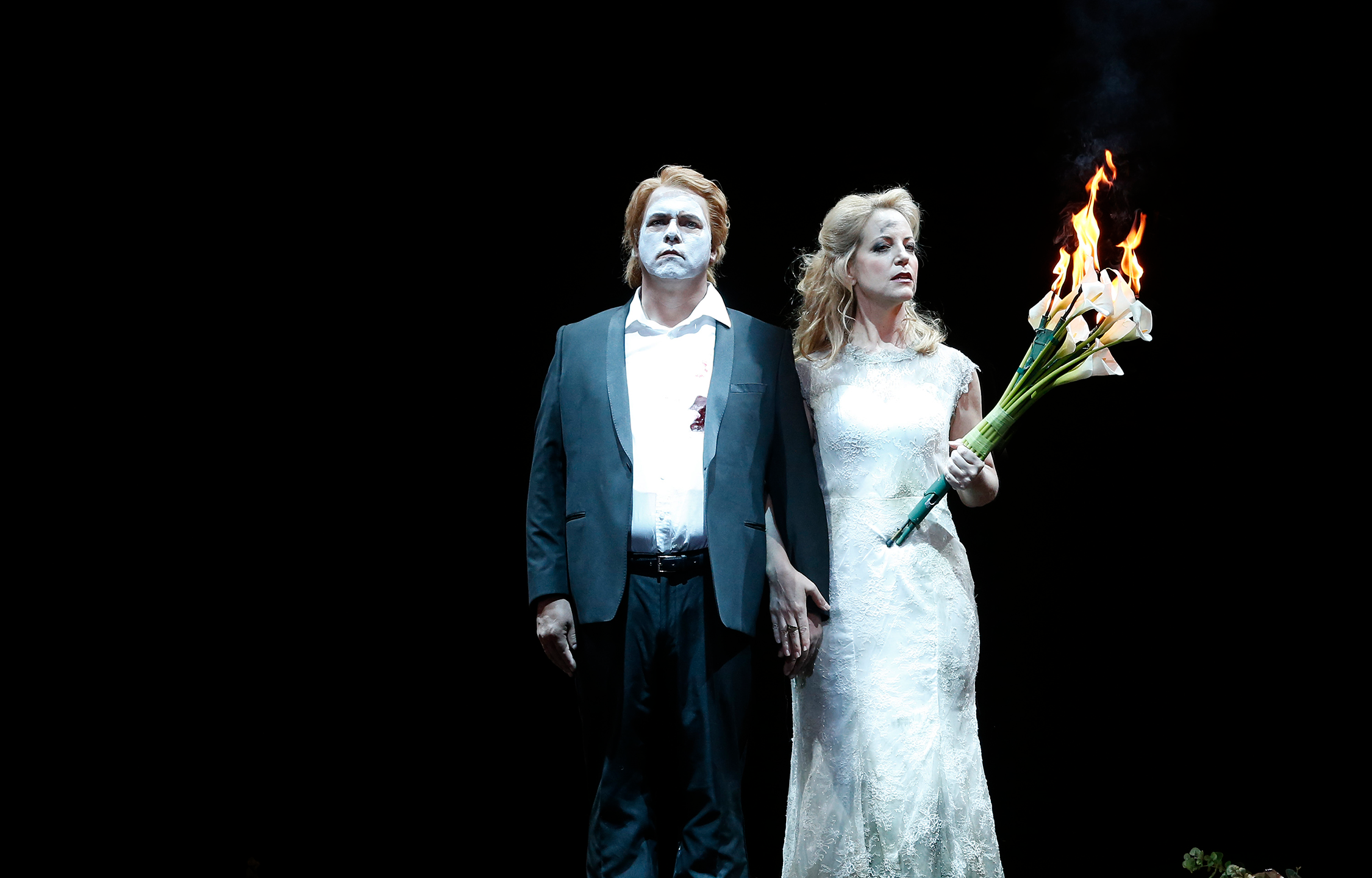Interview with
Lise Lindstrom
The sunny soprano on blood, control and how she found her dramatic voice.
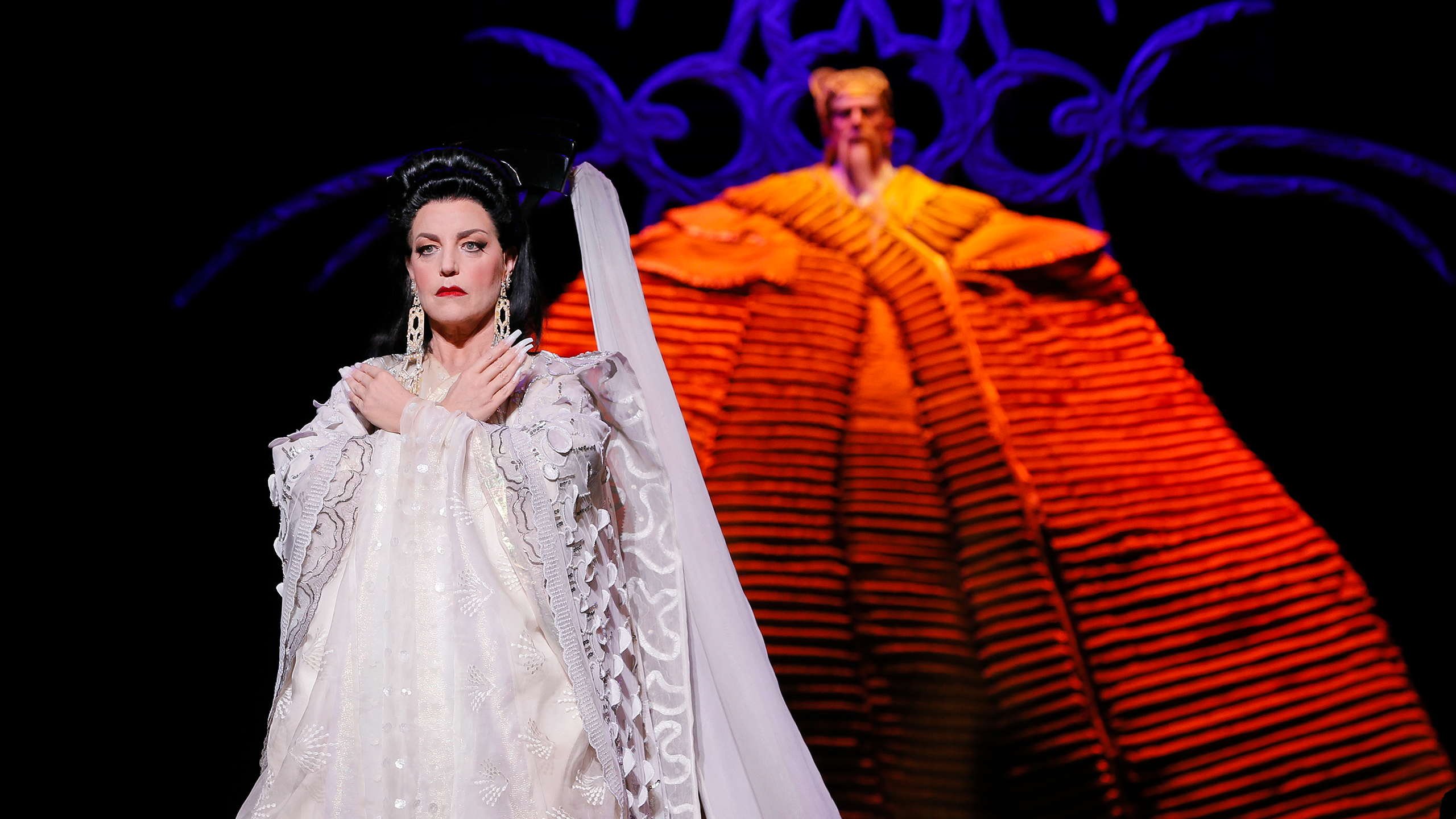
Lise Lindstrom didn’t find her voice until she met Turandot.
“I started off singing jazz and I was terrible at it. So awful.” But even once she got the nudge to try opera at university, Lindstrom couldn’t find her sound.
“I had always felt like I was trying to push an elephant through a keyhole. We all hear these recordings of these beautiful sounds that singers make, and how lovely they are. How beautifully they craft a phrase or choose a word and fill it with so much meaning and emotion, and I could never do that.”
Everything changed the first time she sang Turandot. She realised that her vocal struggles were because she wasn’t really using her instrument. “I needed the elbow room for my voice, my body and my personality to just...” she grunts expressively “… move in.”
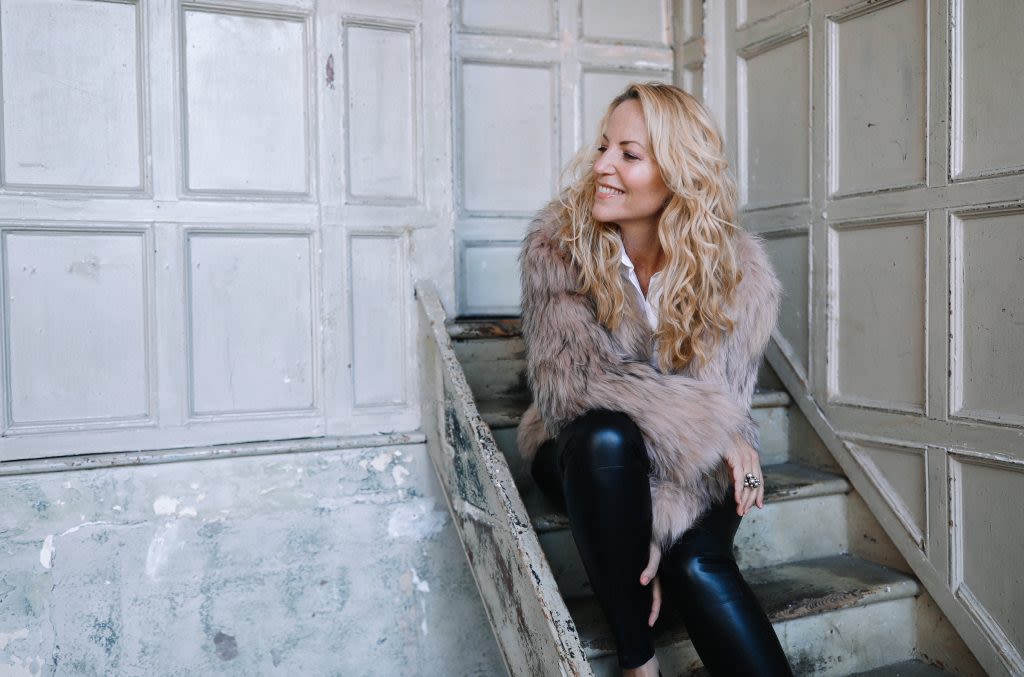
Lise Lindstrom. Photo: Rosie Hardy
Lise Lindstrom. Photo: Rosie Hardy
She’d found the key, and it “unlocked something” in her.
“And then all of a sudden I could just express myself. I could say something with more intent, more aggression. Somehow, by singing bigger repertoire, I had more finesse.”
Turandot would take her to the world’s biggest stages. She made her debut at the Metropolitan Opera as a last minute step-in for an ill singer. After Turandot came Wagner’s warrior woman Brünhilde and Strauss’ Salome and Elektra.
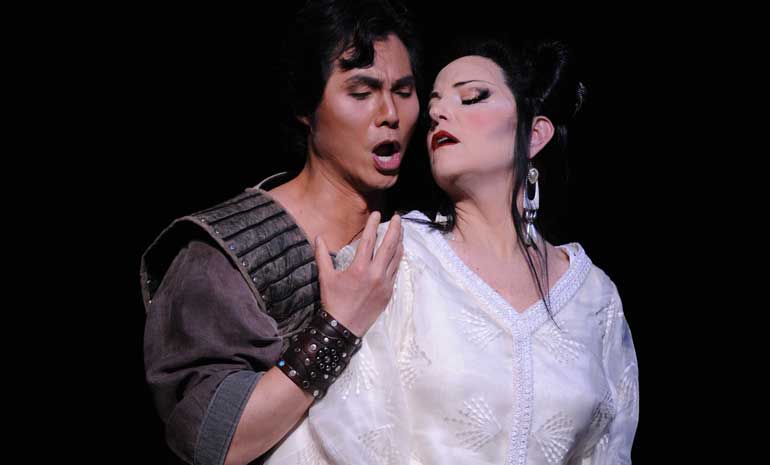
Yonghoon Lee and Lise Lindstrom in Turandot at Sydney Opera House (2015). Photo: Branco Gaica
Yonghoon Lee and Lise Lindstrom in Turandot at Sydney Opera House (2015). Photo: Branco Gaica
The Californian soprano was a reluctant convert to opera, but opera fell head over heels in love with her. Her voice took her to La Scala in Milan, to Vienna and Verona. She sang with some of her biggest idols. She’d found her voice.
But even as she found it, she learned how fragile it all is. Several years ago, she got on a plane and by the time she got off, her voice was gone. “I didn’t get it back for a month and a half. I had to cancel four months of work.” It was a true lowlight in a career full of highlights. Her voice came back, but Lindstrom learned never to take anything for granted. She learned to take a break.
“It all just hinges on these two little vocal folds, and if they don’t work, then nothing else happens.”
Singing Salome
We meet as she’s wrapping up the first stage rehearsals for Salome, and her hands are still red with the blood that marks her final scene on stage.
“I can honestly say Salome is the hardest thing I do. Salome requires this incredible facility to be lithe, not just physically but vocally lithe. I have to spin all these silverly lines and then have absolute balls of steel to come through that orchestra. All of those horns! And the end scene is 20 minutes of having to bring it back to the most silvery, quiet sound. But also be completely unhinged. It takes extraordinary muscular coordination. My hat is off to anyone who sings it.”
Lindstrom’s sung the role more than a dozen times, and she says the role is “in her bones”.
“She’s in me. The words are my friends, now. I have a relationship with them.”
And the character? What can Lindstrom relate to in a homicidal, lusty teenager? Or the ice queen of Turandot or the vengeful Elektra?
“Finding the humanity within these stories is a challenge. All three of these characters are horrific, and really difficult to empathise with.”
“Salome is such a timeless story of a person who is completely demented by their environment. But within all of that dementia, there is a true and honest heart that beats.”

Lise Lindstrom in Salome at Sydney Opera House (2019). Photo: Prudence Upton.
Lise Lindstrom in Salome at Sydney Opera House (2019). Photo: Prudence Upton.
Lindstrom believes that heart is in everyone. “At the end, she’s horrified at what she’s done. She’s killed the one person that was kind to her, outside of this demented matrix she lives in. At the end of my monologue, I feel this capitulation, and I feel ‘Oh my God, how heartbreaking’. Because by then she knows she’s going to be killed.”
Lindstrom’s last monologue is one of opera’s most famous: she sings to Jokanaan’s severed head for nearly 20 minutes before finally taking her heart’s desire: a kiss.
It’s gory and disturbing and a difficult sing, made even harder by the logistics of grappling with a severed head covered in sticky blood.
On the day we do this interview, Lindstrom and the Head of Stage Props are discussing the texture of the blood. It has to be sticky, but not too slippery. It has to drip, but not too fast. Lindstrom doesn’t want to fear slipping over.
It’s one of the quirks of working in opera, and after you’ve done it once, it stops fazing you, Lindstrom says.
“You learn everything the first time around. The first time you’re faced with blood, you say ‘Oh my God, how do I deal with that?’ The severed head. ‘Oh my God, how do I deal with that?’ Chains, or weird costume pieces or dancing or exhaustion – you learn it all in that first go around.”
The stress factor of a role debut is way underestimated, Lindstrom says. “The learning curve is so steep. So yeah, you’re going to lose your mind the first time you do something.”
Opera singers as athletes
If Salome is a particularly physical role, Lindstrom is the ideal singer to perform her. The soprano is not a “park and barker”, or recitalist, she’s never been one to stand and sing.
“If I don’t feel the movement in my body, I can’t unlock the sound. It’s got to come all the way from your feet, through your head, in through your arms, through your torso. For me, I have to embody the wave of the sound. I’ve got to literally feel the energy go through me.”
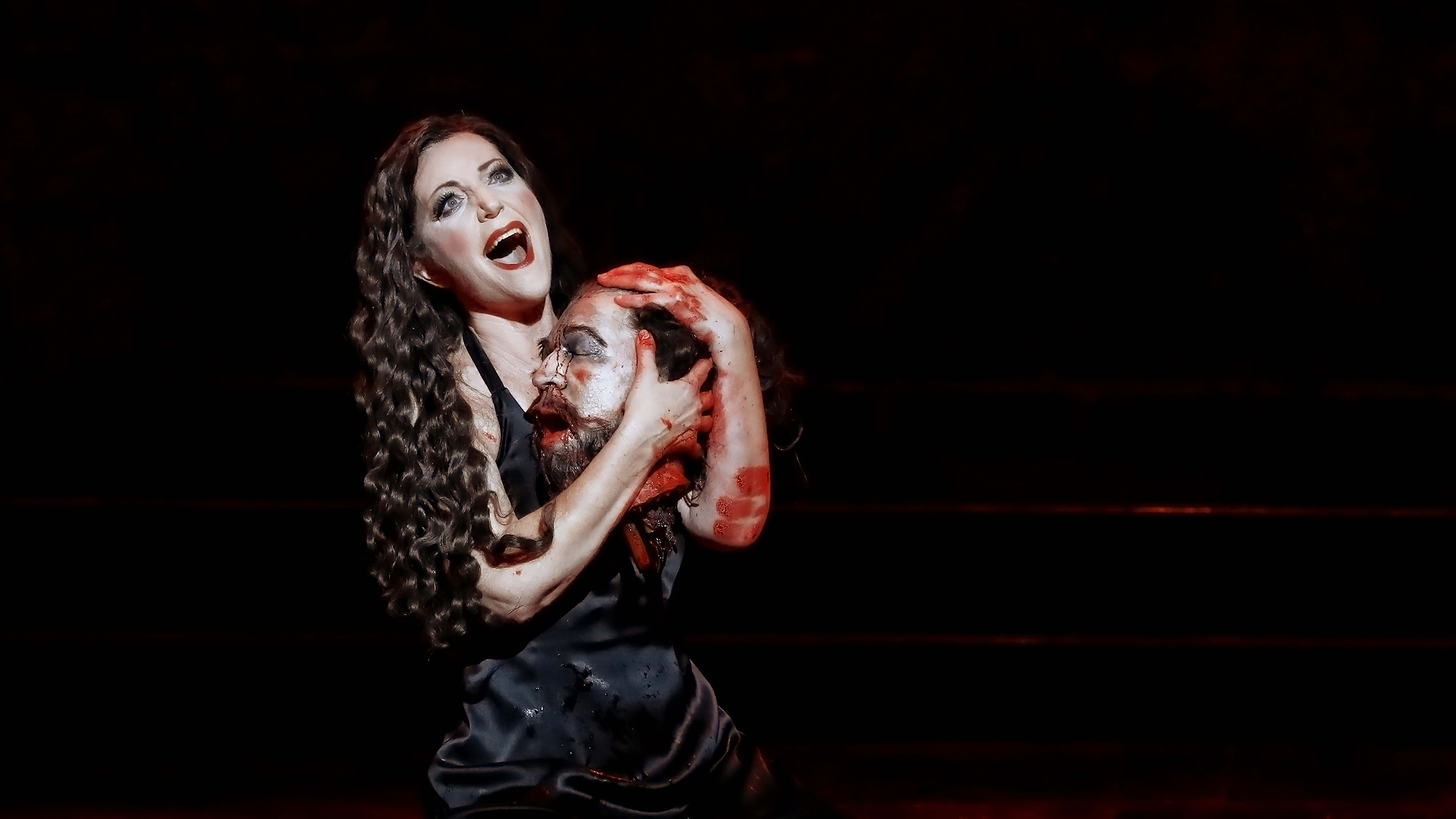
Lindstrom's show routine
The night before: “I don’t go out, I don’t see people, I want to be home by four in the afternoon. Then I shut up. I just stop talking.”
The day of: “I sit as much as I can. I let my energy slowly accumulate... I study my score silently. I go through every word, every note, every bit of blocking. I hear it all in my head, I visualise it all in my head, and then I’m done with it.”
The fuel: “I used to have a steak or a big protein the night before and carbohydrate the day of a performance. Now I just eat whatever I want. For Salome, I’ve actually found a really big salad is what I need to feel awesome.”
Photo: Stefan Vinke as Siegfried and Lise Lindstrom as Brünnhilde in Opera Australia's Melbourne Ring Cycle in 2016. Photo by Jeff Busby.
